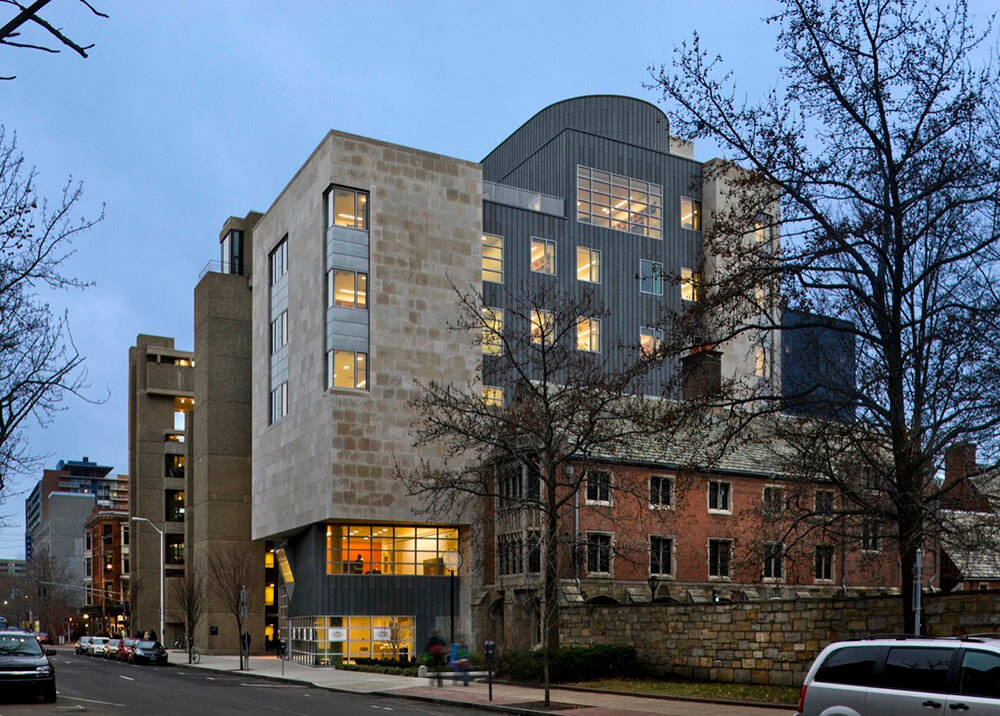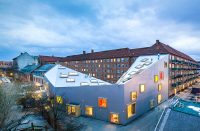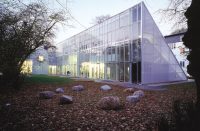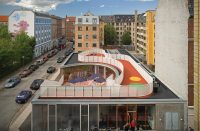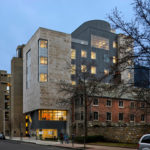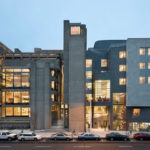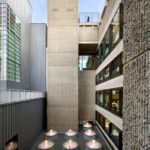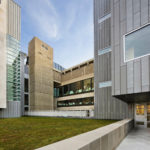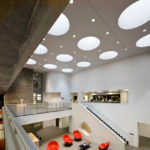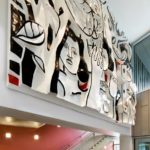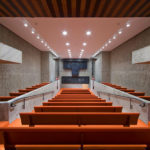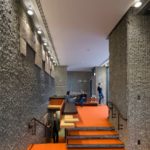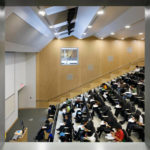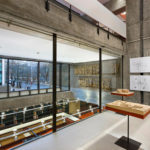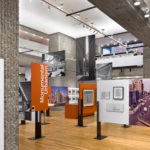Architect(s): Gwathmey Siegel & Associates Architects
Address: 180 York St, NEW HAVEN-CONNECTICUT, United States
Latitude/Longitude: 41.3088545,-72.9319413
Photographs: Peter Aaron
Yale University’s Rudolph Building, that used to be known as the Art and Architecture Building was designed in 1963 by the modern master and then chair of the School of Architecture, Paul Rudolph. It is considered one of Rudolph’s most serious works. It went under a complete renovation and expansion by restoring the structure to its original 1963 intention and providing space for the History of Art department.
The 114,000sf Brutalist building that is built of of cast-in-place concrete, has a total of 37 different levels on nine floors. Two of the floors are below grade, and is a cornerstone of Yale’s vibrant arts campus. After a 1996 planning study, Yale University made a decision to undertake the exterior and interior renovation of the structure. At the same time, a seven-story History of Art Building was added allowing the expansion of Art and Architecture Library while having classrooms, seminar rooms, lecture halls, faculty offices, lounge, and public café. The project received LEED Gold certification.
The design is a result of the integration among programmatic, structural and mechanical needs.The restoration of exterior walls and the installation of historically correct windows are included. Also, it made upgrades to all building facilities like the exhibition gallery, jury and studio spaces, study areas and administrative and faculty offices. New lighting and furnishings throughout are introduced while the structure is brought into compliance with current building and fire code regulations.
The new 87,000sf Jeffrey H. Loria Center for the History of Art is designed to have its own iconic presence in the overall composition, while an addition. Its main volume is clad in limestone and zinc panels, with the intersections to the Rudolph Building rendered in glass and aluminum panels, thus reinforcing both the integration and articulation of the two structures.
This project, that is said to be extraordinary, represents the culmination of Charles Gwathmey’s forty-five year relationship with the university’s School of Architecture. Paul Rudolph was its chairman during Mr. Gwathmey’s studies and also became his mentor.

